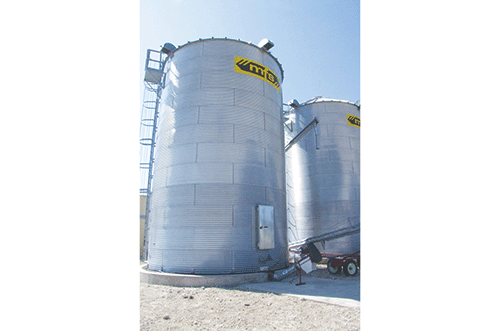The Namibia National Strategic Food Reserves (NSFR) in various localities have run out of maize grains, with silos at Omuthiya and Okongo empty.
The Agricultural Inputs and Household Food Security Situation Report released recently indicates that the Omuthiya silo, which holds a storage capacity of 4 000 tonnes, is depleted of both white maize and pearl millet.
Okongo’s silo, which carries a storage capacity of 4 500 tonnes, has also run out of white maize, although there is a stock level of 832.79 tonnes of pearl millets, which represents 18% of its total capacity.
The report reveals that while the overall total storage capacity of the national strategic food reserves located across the country stands at 22 900 tonnes, the current stock level of grains in those silos is currently at 403.93 tonnes, which constitutes 21% of the total holding capacity.
The available stock consists of 1 685.01 metric tonnes of white maize at Katima Mulilo. This stock constitutes 22% of its storage capacity of 7 400 tonnes.
The Rundu silo is at 2 157.42 metric tonnes of white maize, representing 53.95% of its 4 000 holding capacity. The Tsandi silo, with a storage capacity of 3 000 tonnes, has only 179.50 metric tonnes of white maize left, representing 5.9% of its total capacity.
The Ministry of Agriculture, Water and Forestry has attributed the depletion of both maize and pearl millet to low local production due to insufficient rainfall experienced last year.
Besides that, much of the grains, which could have been stored in the silos, have been distributed to needy people faced by food insecurity, as part of the drought relief food assistance through the Office of the Prime Minister, as well as for AMTA’s own milling.
“Another reason contributing to the low intake of grains from farmers is the transport constraint, as some producers find it difficult to deliver grains to silos which are far from their production areas,” the report showed.
Meanwhile, it was revealed that the locally available cereals for the current consumption period are estimated at 192 700 metric tonnes, which is about 52% of the domestic cereal requirement of 371 800mt.
According to the report, most of the available grains were imported between May 2023 and November 2023. A total of 150 700 metric tonnes consisting of 90 200 metric tonnes of wheat, 60 100 metric tonnes of maize and 0.359 metric tonnes of millet/sorghum, were imported.
The wheat imports have resulted in a surplus of 40 140 metric tonnes. There is still an uncovered shortfall of 10 400 metric tonnes and 58 200mt for maize and pearl millet/sorghum, which is expected to be covered through additional commercial imports during the current marketing season.
The report shows that 579 000 Namibians (22% of the population) mainly living in rural areas are faced with high levels of acute food insecurity.
Dams at low levels
Despite heavy downpours across Namibia for the past weeks, not enough rainfall has been received to fill some dams.
The water levels of most dams are currently low, with the total content standing at 57.4%, compared to 70.6% in the corresponding period last season.
A Namwater report stated that only the Neckartal and Friedenau dams have the highest amount, with their level of full capacity standing at 85.9% and 56.5%, respectively.
Other dams such as Oanob, Swakoppoort and Naute are at 45.9%, 44.4% and 43.7% of their holding capacities, respectively.
Moreover, Olushandja is the only dam with a high-water level, compared to the previous season. The rest of the dams in the country are currently below 20% of their holding capacity, with the Otjivero Silt dam, Dreihuk dam, Bondels dam, and Omaruru Delta and Omatjene dam completely empty.
– lnashuuta@gmail.com


